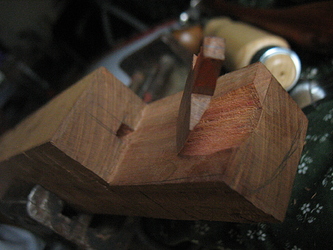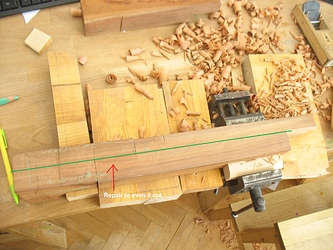I had a great laugh at the mention of Bob Ross and happy trees! So true! In many instances, you do have to put 1+1 and more together. Something like following sewing patterns. But I believe you can get some happy trees moments :)))
I have repaired one shamisen and built another following Kyle´s book. As much as I was taught not to write into books, this one is scribbled all over with notes while building.
I love the book a lot and have a great respect for Kyle for putting it all together, but personally, from a building point of view, I would not recommend it to someone who has no patience, enthusiasm for woodworking , or the will to build the instrument till the end. Otherwise, people, buy it!
Although I am a mural restorer by trade and have a bit of violin playing, I started from scratch, no tools, no experience in woodworking. My family thought I was crazy, specially the moment when I got my lumber… I took it all as a challenge to learn something new. I watched many youtube videos regarding tools and how to sharpen them, etc. I still believe that I am abusing some of my tools 
Kyle´s book is full of photos, which is a great plus. If it wasn´t enough or I wasn´t certain of a shape, I would google up all the images I could of all the tsugaru shamisens I could find. That´s also why I ended up „complaining“ about the curve of the tenjin and that I have a feeling that the template in the book is not curved enough (4th edition). But by looking at the various images, I also realized that shamisen shapes are many and for my first build, I felt it would be a waste to do the tenjin again, so I let it be. Next time, I´ll shape it differently. (hopefully)
Getting a broken shamisen was a bonus and ended up as a physical example. Its repair and reskinning was also a good excuse to build the stretching tools and try them out 
All in all, I enjoy the process very much even if not all went as smoothly as I imagined it would and many times, I said to myself „Why are you doing this?!“
Parts where I messed up the most: cutting up and separating joints. Nakazao „middle line“ did not match  and later on, one of the joints snapped. Had to start all over again… And also, forgetting to add the nakago joint to the sao.
and later on, one of the joints snapped. Had to start all over again… And also, forgetting to add the nakago joint to the sao. 
Moment, I had really no idea what I was doing: finding the spot where to drill the hole for the nakagosaki while having in mind that the sao has to be tilted a certain way.
Favorite part to build: the tenjin and dou because I really loved shaping it.
Part that took me a long time to figure out: saruo because of its complex shape.
Least favorite part: the nakago. I don´t know why, it´s just me.
p. s. and I wholly agree with everything on p.12



 and later on, one of the joints snapped. Had to start all over again… And also, forgetting to add the nakago joint to the sao.
and later on, one of the joints snapped. Had to start all over again… And also, forgetting to add the nakago joint to the sao. 



